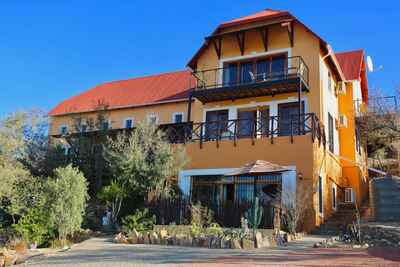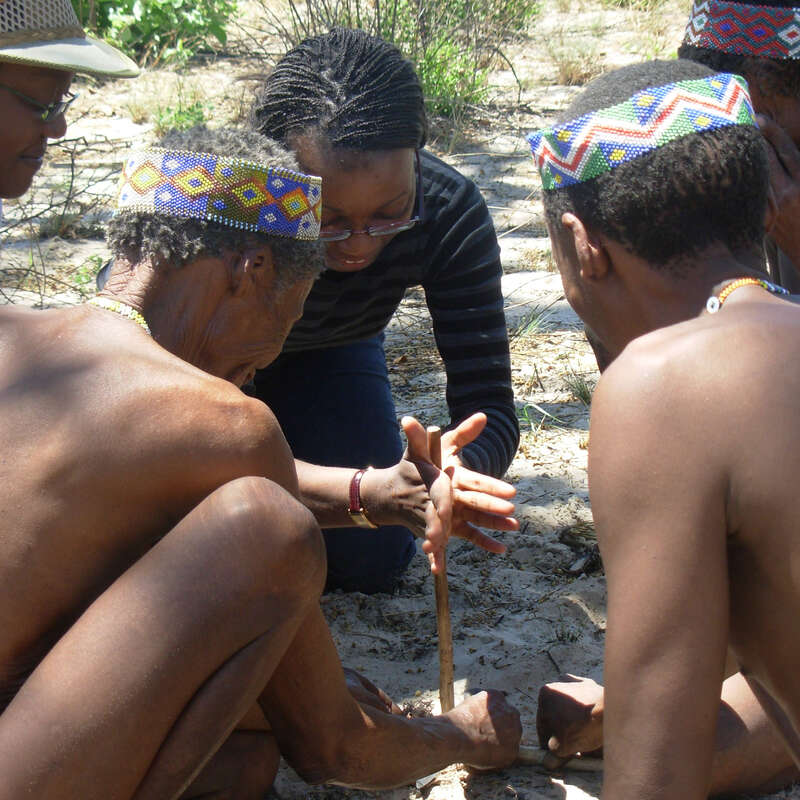About Ti Melen Guest House
Ti Melen is a small, welcoming guesthouse set on a slope in the quiet suburb of Avis, about ten minutes’ ...
... drive east of the Namibian capital Windhoek, and about 35 minutes from the international airport.
A small, friendly guesthouse only a short drive from the centre of Windhoek, Ti Melen is surrounded by bush and nature. With its location between the international airport and the capital, it would make a relaxed place to stay before or after an international flight, especially for those who would prefer to be away from the city centre.
Our view
A small, friendly guesthouse only a short drive from the centre of Windhoek, Ti Melen is surrounded by bush and nature. With its location between the international airport and the capital, it would make a relaxed place to stay before or after an international flight, especially for those who would prefer to be away from the city centre.
Accommodation
6 rooms
Children
Best for aged +7
Open
All year
Traveller reviews of Ti Melen Guest House
3 real, un-edited reviews from Expert Africa's travellers.
Arrived 14 May 2024, 1 nights
"Great location for access to airport"
Overall rating: Excellent
Arrived 10 Aug 2021, 1 nights
"Ti Melen Guest House review"
Overall rating: Excellent
Arrived 10 Aug 2021, 1 nights
"Ti Melen Guest House review"
Overall rating: Excellent
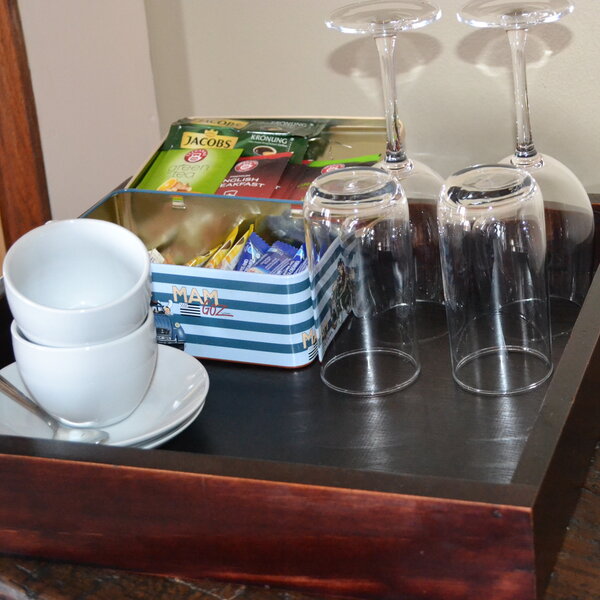
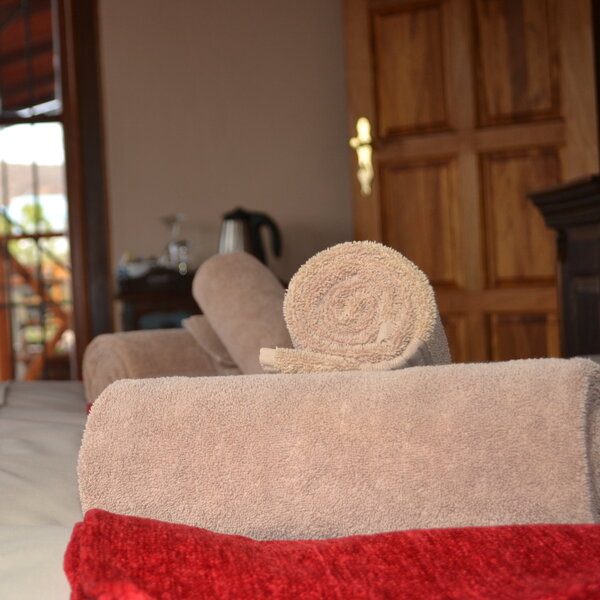
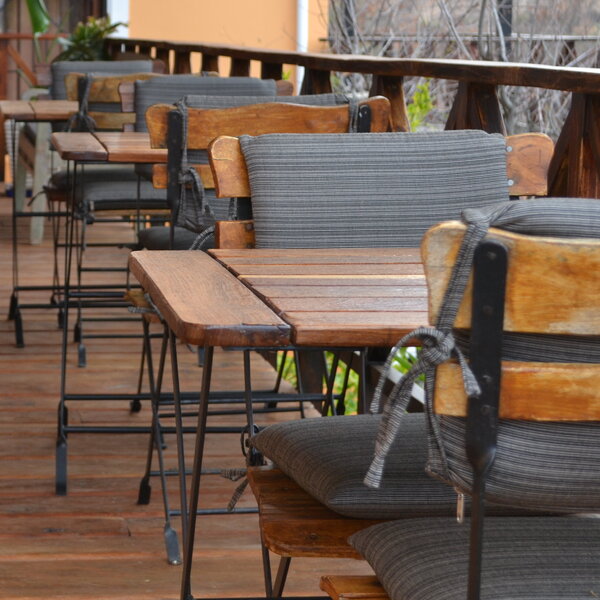
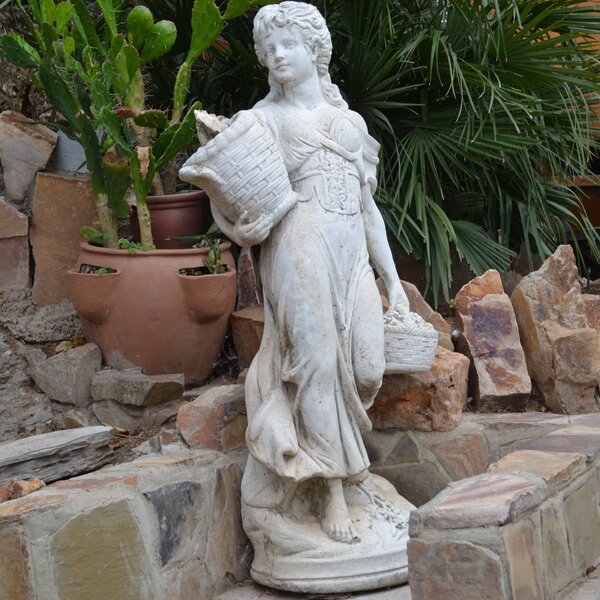
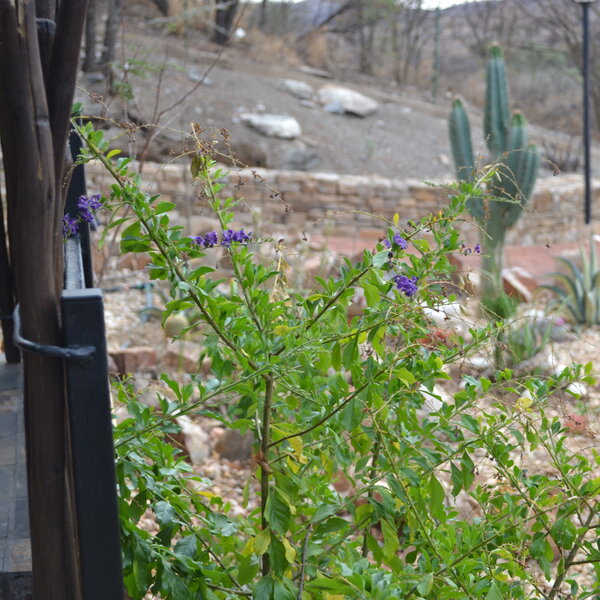
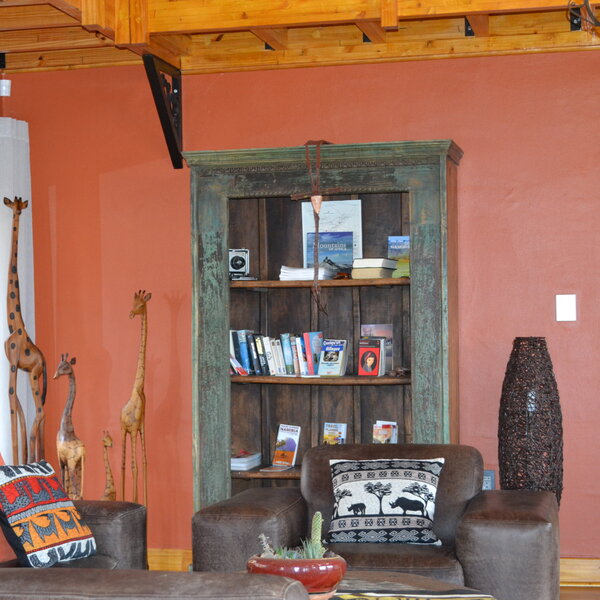
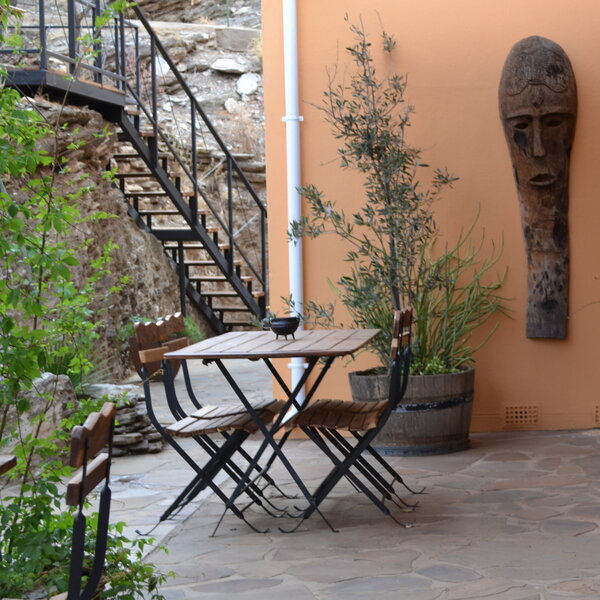
Expert Africa's gallery
When we travel we take lots of photos ourselves to give you a real and un-edited view of the trips. See our 7 pictures of Ti Melen to get the candid view.
View galleryTi Melen Guest House: Our full report
Ti Melen is a small, welcoming guesthouse set on a slope in the quiet suburb of Avis, about ten minutes’ ...
... drive east of the Namibian capital Windhoek, and about 35 minutes from the international airport.
Quietly located at the end of a street in the suburb of Avis, the striking Ti Melen with its tall turret is set behind large electric gates that lead into a parking area and a well-kept front garden. While we have not stayed here, we were impressed on our visit in October 2019.
A flight of steps leads up to an elongated wooden veranda offering views of Avis, the surrounding bush and the mountains in the distance. Decorated with various pots plants, it’s a welcoming spot to take in the view with individual tables and chairs and a comfortable wooden bench.
Ti Melen’s main area, which serves as reception, guest lounge and breakfast room that opens out onto a patio, feels warm and welcoming – with exposed beams in a high ceiling, bright burnt-orange walls and beautiful polished pine floors. Rustic and antique wooden furniture combines with bright textured table runners, cushions and floor rug and comfortable large leather sofas. A freestanding fireplace adds to the appeal, as do a small library, a well-stocked “honesty” wine fridge and a tea/coffee station.
Each of the six bedrooms follows a similar theme, but is painted differently in soft orange, light peach, soft vanilla, light mocha, and soft mustard, with crisp embroidered white cotton pillow-cases and beige linen. The beds are dark wood with princess-style mosquito nets suspended above. Every room has TV, a tea/coffee station, a fully stocked minibar and a writing desk with chair, as well as a small outside area.
Three of the bedrooms are upstairs, two downstairs, and one – the family room – has a separate entrance from the front garden.
- The three upstairs bedrooms, linked by a narrow corridor, are reached by a Victorian cast-iron spiral staircase. Rooms 1 and 2 have twin beds and a shower inside the main bedroom, while room 3 – which has the best view of the mountains – has a separate bath and shower with a huge floor-to-ceiling mirror.
- Of the two downstairs bedrooms, room 4 has its own separate entrance to an outside veranda and private sundeck, and has a separate bath and shower). Room 5, which is immediately below room 3, shares that great view.
- The family room has its own private entrance through a gate near the car park into a small front garden. Sliding doors open into a spacious room with a small lounge area, a double bed at the front and twin beds tucked behind a half wall. A door facing the children’s bedroom area leads to a shared bathroom with both bath and shower.
Birdwatching from the garden is a great way to while away an hour or two, or you could take a walk along one of the marked trails to Avis Dam. There are also privately owned horseriding stables close by.
Although Ti Melen offers only bed and breakfast, the Eagle’s Beer Garden, where guests can go for meals, is within easy walking distance. Otherwise, it’s a drive of around ten minutes to the restaurants and bars of Eros, or into the centre of Windhoek. Shuttle transfers can be arranged to the airport and into the city centre at an extra charge.
Geographics
- Location
- Windhoek, Namibia
- Ideal length of stay
- One or two nights, usually at the start or end of your holiday in Namibia.
- Directions
- Ti Melen is at 27 Schuckmann Street in a quiet cul de sac in the suburb of Avis just east of Windhoek.
The guesthouse can arrange shuttle transfers to the airport or the city centre at an extra charge. - Accessible by
- Self-drive or Fly-and-Transfer
Food & drink
- Usual board basis
- Bed & Breakfast
- Food quality
- Breakfast only. I did not eat here on my visit in October 2019, but the guesthouse offers a buffet with a selection of cold meats, cheeses, fruit preserves, breakfast cereals, bread, fruit salad and yoghurt, along with fruit juices, teas and coffee. A cooked breakfast of eggs, tomatoes and bacon can be served on request.
- Dining style
- Individual Tables
- Dining locations
- Indoor and Outdoor Dining
- Further dining info, including room service
- Although Ti Melen does not offer meals other than breakfast, there is a beer garden within walking distance, along a pathway and through a private locked gate from the guesthouse.
- Drinks included
- None, except tea, coffee station in all the rooms. The fully stocked minibar in each of the rooms is at an extra charge, including bottled water.
Children
- Attitude towards children
- Ti Melen welcomes children of all ages.
- Property’s age restrictions
- No minimum age restriction; children of all ages are welcome.
- Special activities & services
- There are no special activities for children but there is plenty of space outside for them to run around and explore.
- Equipment
- There is a baby cot, and the family room has twin beds for children but no baby bath, changing table or highchairs.
- Generally recommended for children
- The family room below the guesthouse has its own separate (and level) entrance and a small private garden. Sleeping four as it stands, it is spacious enough to take an extra single bed if needed. With this, a pool and the large garden we think Ti Melen would be ideal for older children, but not for little ones.
- Notes
- There is a steep flight of steps leading to the main area, which is not ideal for younger children or those with baby buggies. The pool is unsupervised and there is a lake relatively close, so children would need to be watched in these circumstances.
Communications
- Power supply notes
- There are plug points in each room for charging batteries and electrical equipment. Travellers should bring their own universal adaptors.
- Communications
- There is no landline at the guesthouse, but there is WiFi reception and good cellphone coverage.
- TV & radio
- Each of the rooms has a TV with satellite channels.
- Water supply
- Mains
- Water supply notes
- Rooms 3, 4 and 6 have both a bath and shower; the others have only a shower.
Health & safety
- Malarial protection recommended
- Yes
- Medical care
- There are doctors and hospitals in Windhoek, around ten minutes’ drive away.
- Dangerous animals
- Low Risk
- Security measures
- Ti Melen is on a secure site with a high electric fence around the property and a guard on duty at night between 6.00pm and 7.00am. The high security gates are always locked and overnight guests have remotes on their room keys to get in and out. Each room has its own alarm system and panic button.
- Fire safety
- There is a fire extinguisher in each room.
Activities
Extras
- Disabled access
- On Request
- Laundry facilities
- Not included, but can help in an emergency
- Money
- No currency exchange; each room has a digital safe.
- Accepted payment on location
- Visa and Mastercard are accepted, as are cash payments in Namibian dollars and South African rand.
Plan and book your trip with Expert Africa
All of our trips are tailor-made, so we'll always adapt them to suit you. Talk to an Expert and let us plan and arrange your perfect trip.

Talk to an Expert
Call or email us now! We’ll match you with the Specialist in our team who is best suited to help you. Then together we can start planning your trip.

Set up your itinerary
Based on our experience and your ideas, your specialist will create a detailed, costed itinerary. We’ll refine it together, until we have a trip that you’re perfectly happy with.

Prepare for your trip
The same Specialist will make the seamless arrangements for your trip, send you detailed travel documents, and be available to answer any questions before you depart.

Travel with peace of mind
After you set off, you’ll be cared for by our partners in Africa, most of whom have worked with Expert Africa for decades. And if you ever need us urgently, we’re available 24/7.

When you return
We love to learn about your trip, and so will always be grateful if you’ve the time to give feedback to your Specialist when you return.
Ti Melen Guest House's location
Look closer at the environment and surroundings of Ti Melen.
Excursions from Ti Melen
Optional extra day-trips and excursions possible whilst you're staying at Ti Melen. Talk to us: these are usually best arranged before you go.
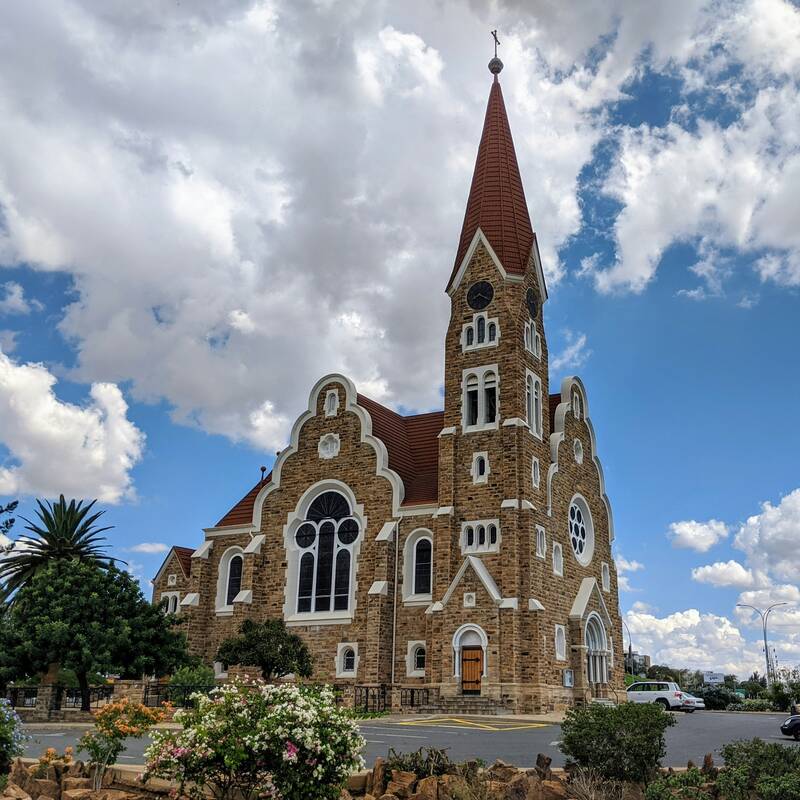
Windhoek City Tour
three hour Windhoek City Tour
Windhoek city tours offer a mix of history, culture, and local flavour, showcasing Namibia’s colonial landmarks, vibrant markets, and cuisine.
More about Windhoek City TourOther lodges in Windhoek
Alternative places to stay in this same area.
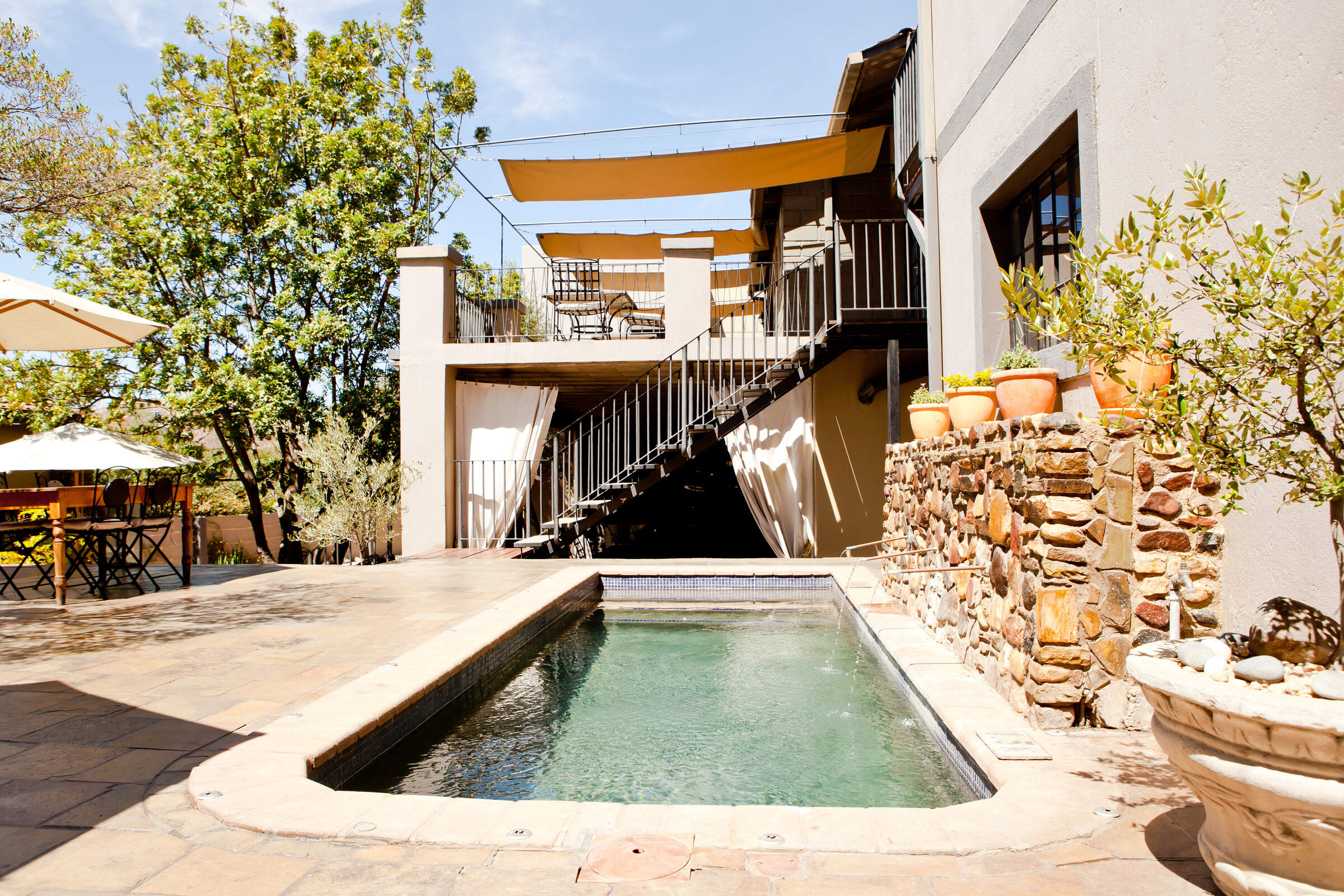
Olive Grove
In a quiet Windhoek suburb, Olive Grove is one of our favourite guesthouses: stylish, with a friendly, welcoming atmosphere and excellent food.
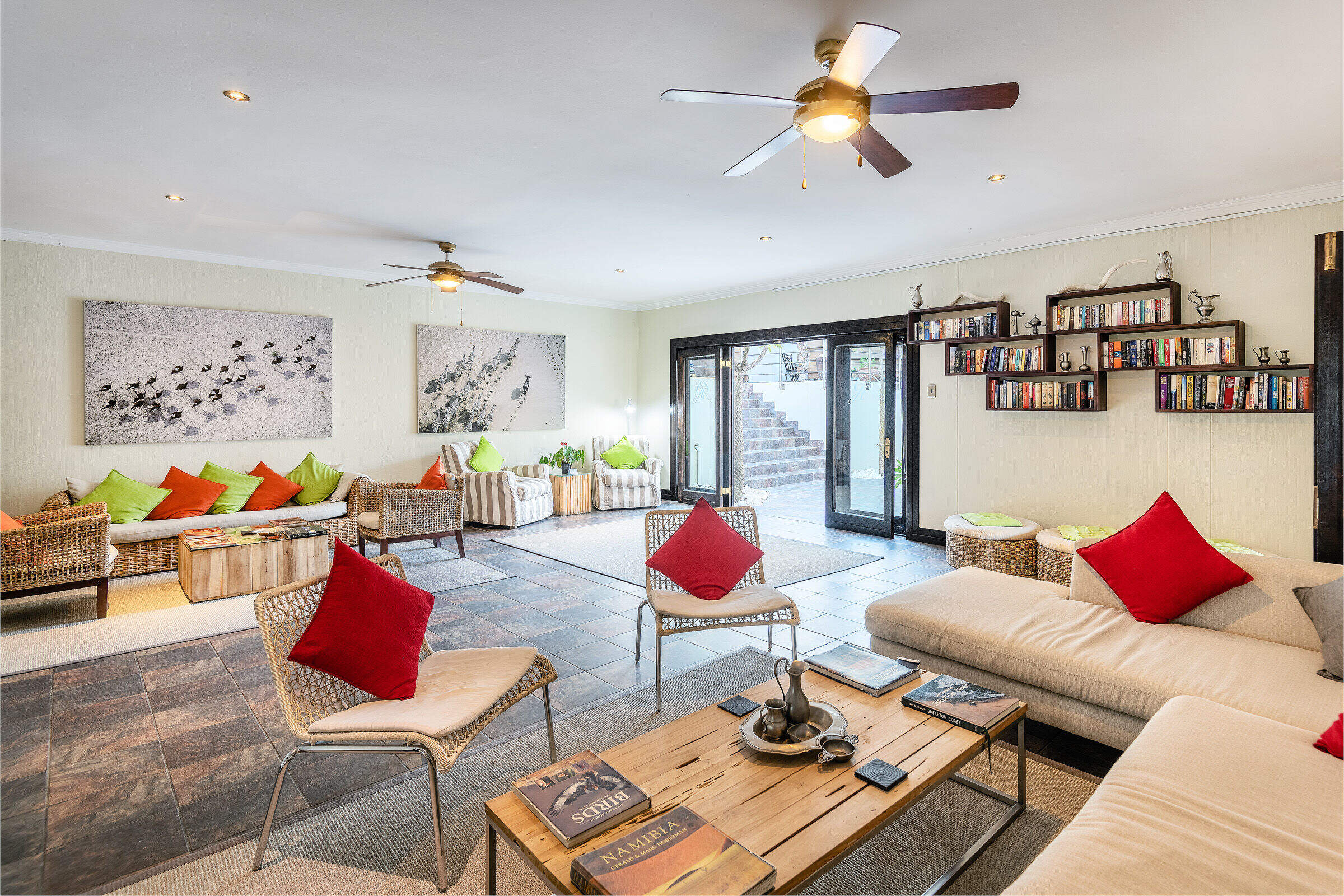
Galton House
A cool stylish sanctuary in a quiet suburb of Windhoek, Galton House boasts a pool and a restaurant that serves breakfast, lunch and dinner.
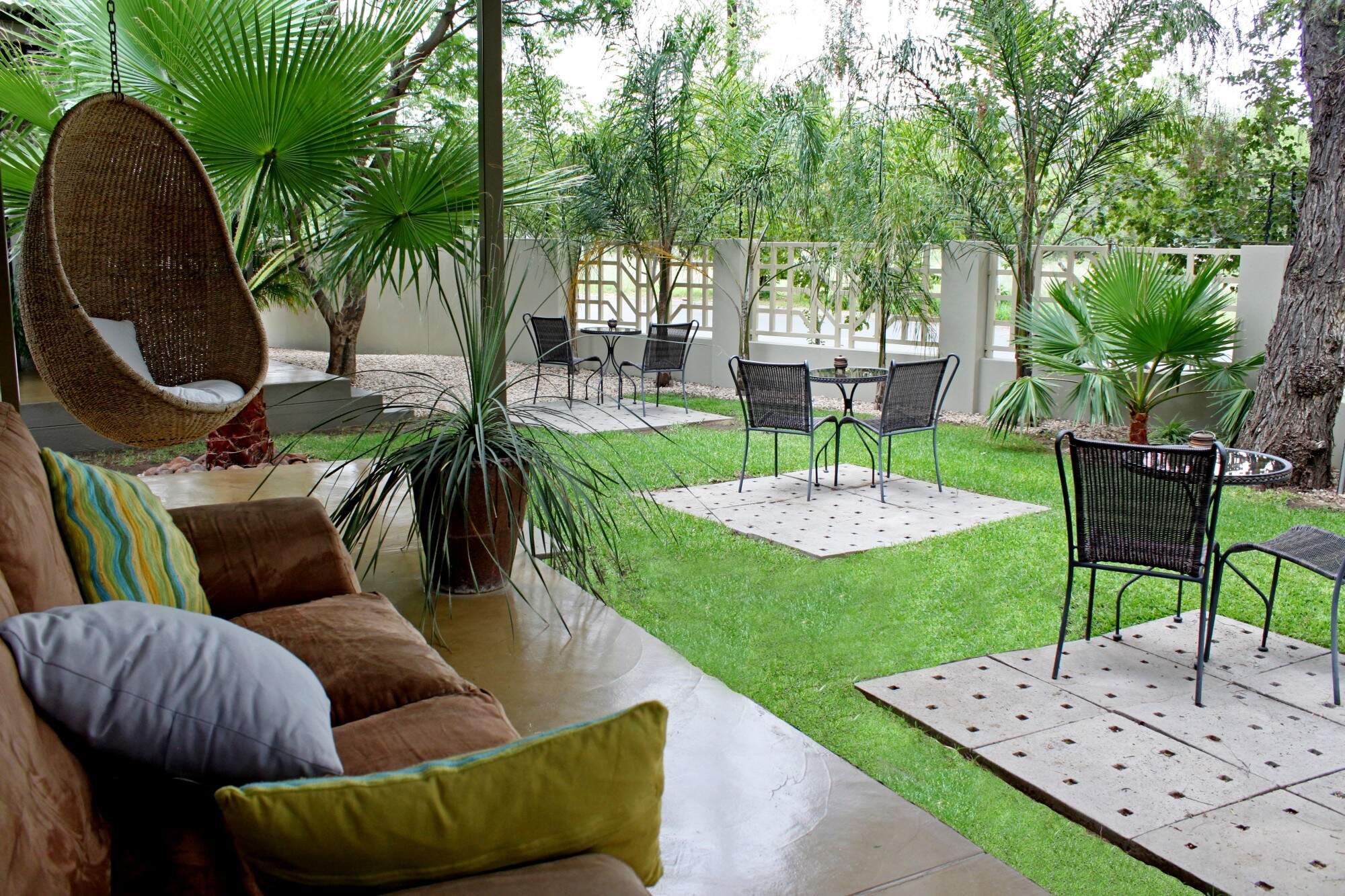
Elegant Guesthouse
The Elegant Guesthouse is a friendly, comfortable establishment with a lovely, tranquil garden, and is a good choice for an overnight stay in Windhoek.
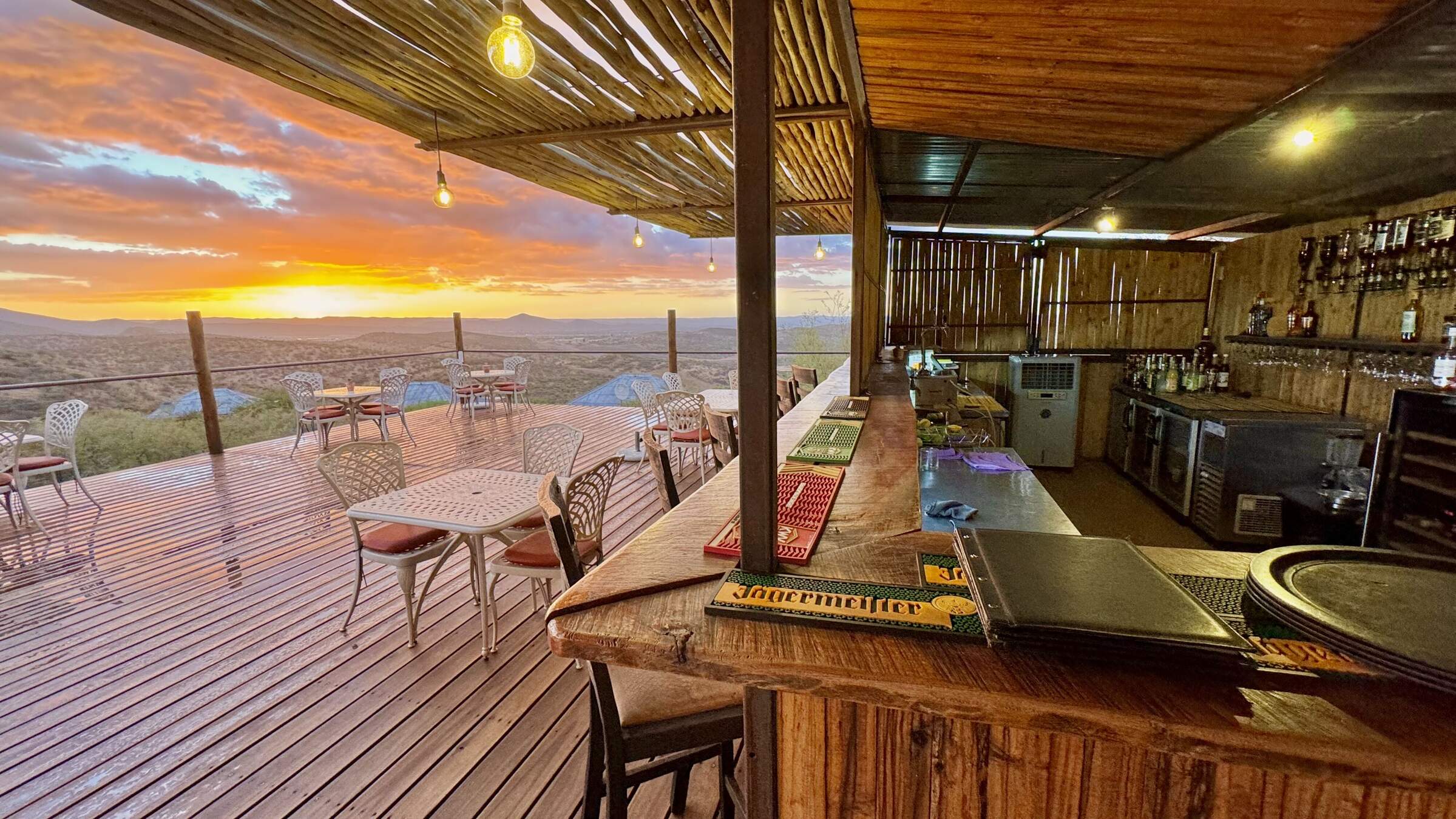
River Crossing
Secluded on a private game reserve between Windhoek and the international airport, River Crossing is a tranquil place to start or end a trip.
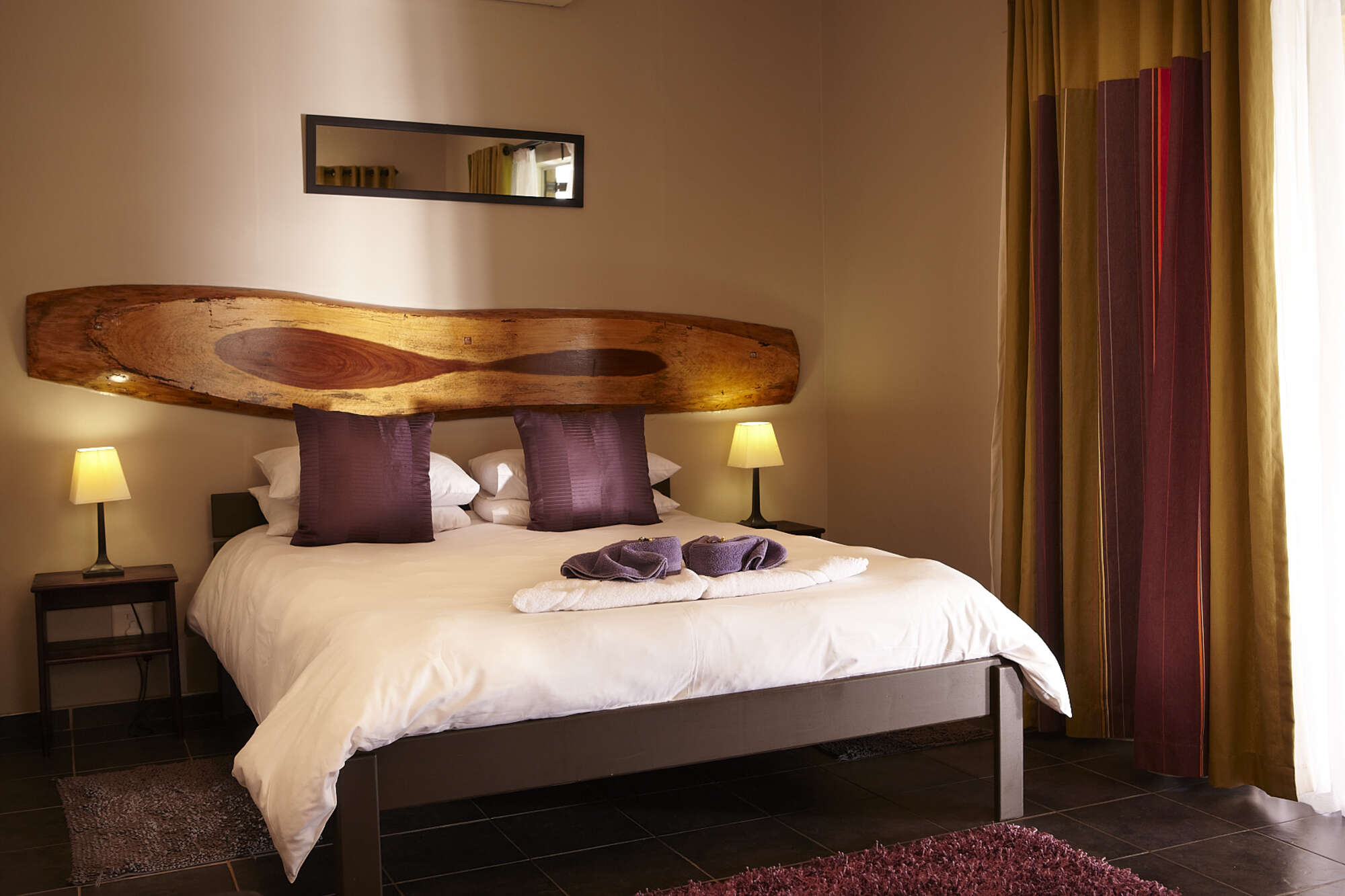
Villa Violet
Villa Violet is a friendly, owner-run guesthouse in a residential area of Windhoek, just a few minutes' drive from the city centre and numerous restaurants.
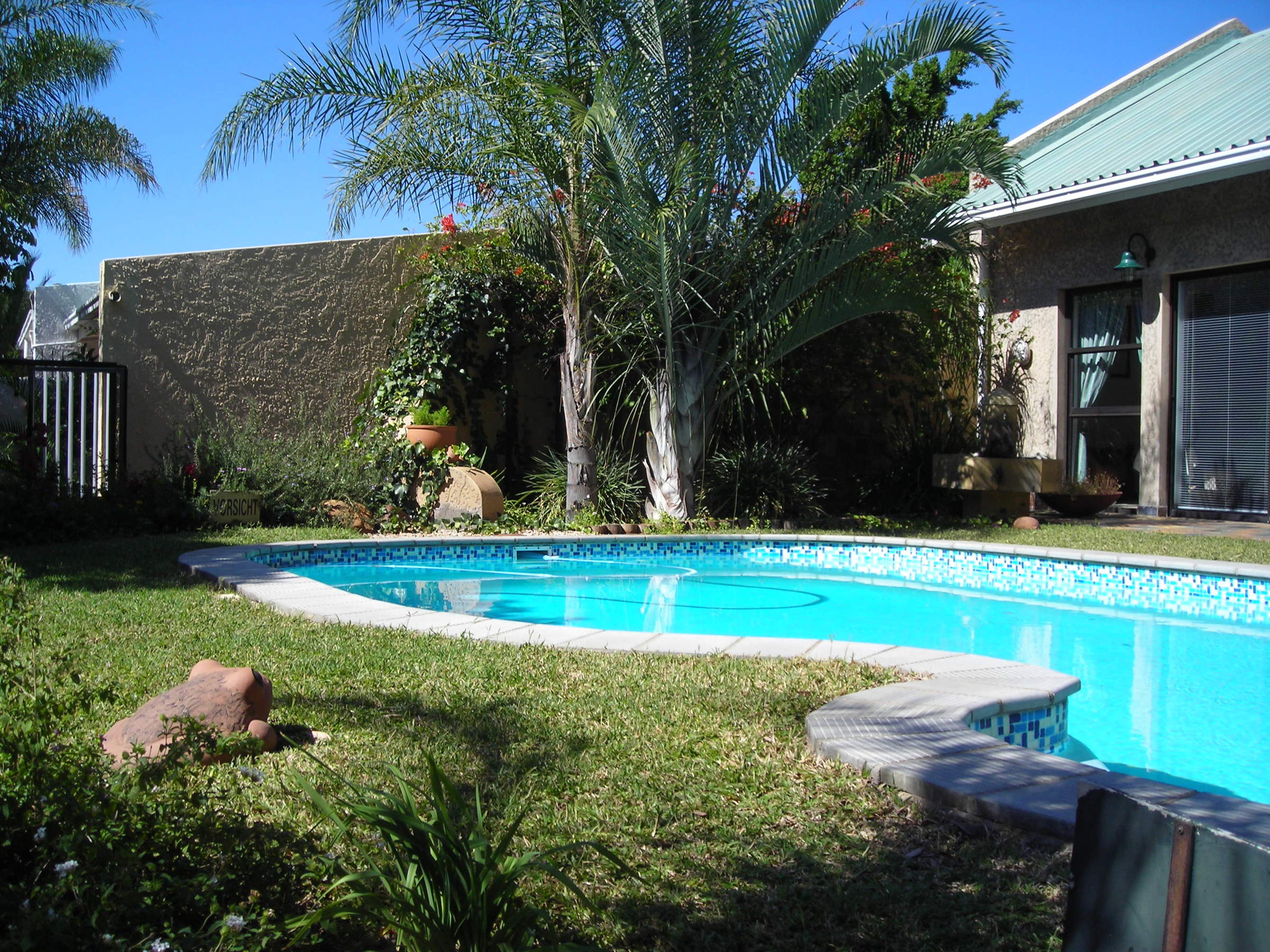
Haus Sonneneck
Haus Sonneneck was one of Windhoek's best pensions just a few minutes' drive away from the city centre, however it has now closed.
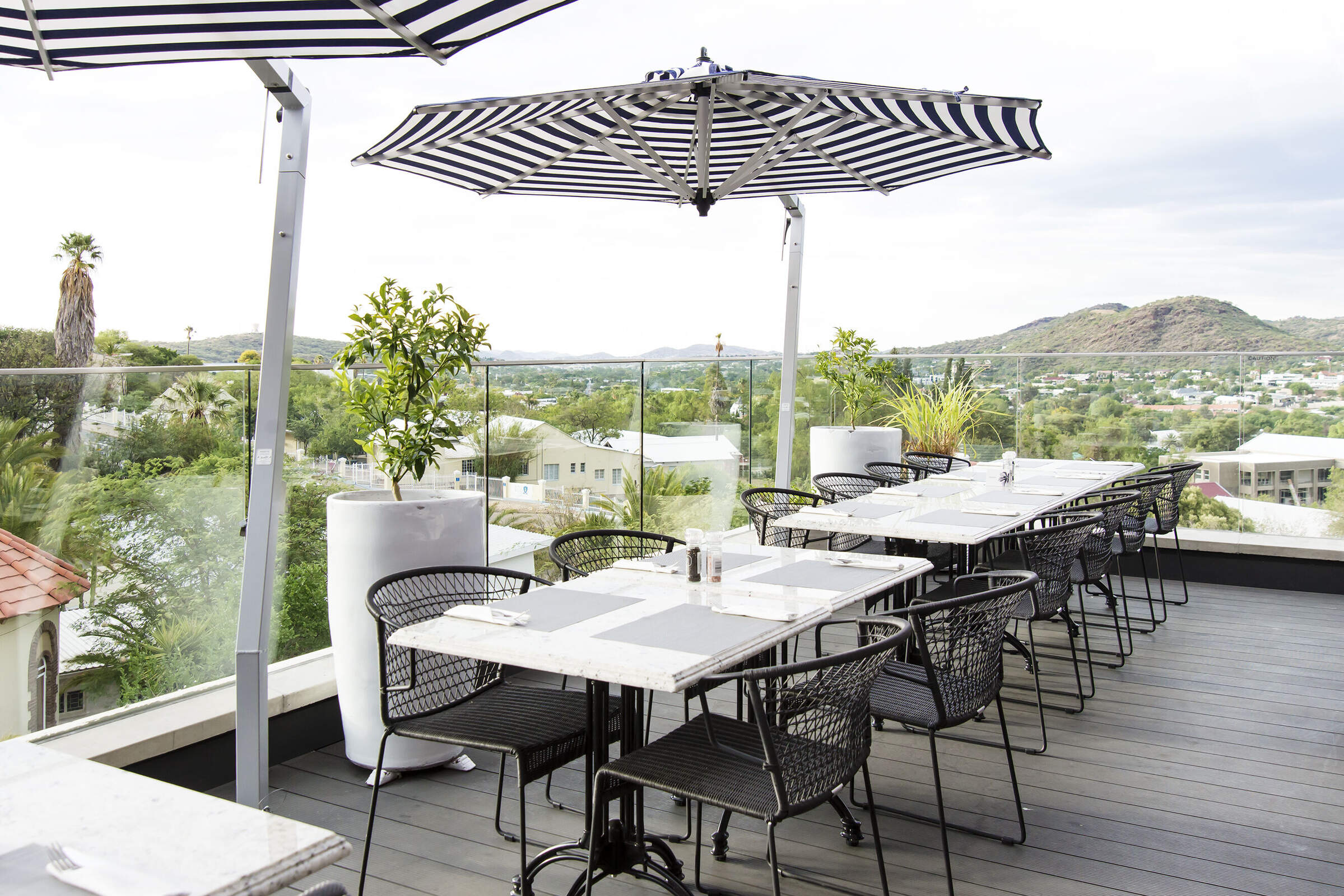
Weinberg Hotel
In a quiet upmarket suburb of Klein Windhoek, the stylish Weinberg has a friendly, welcoming atmosphere and luxury facilities.
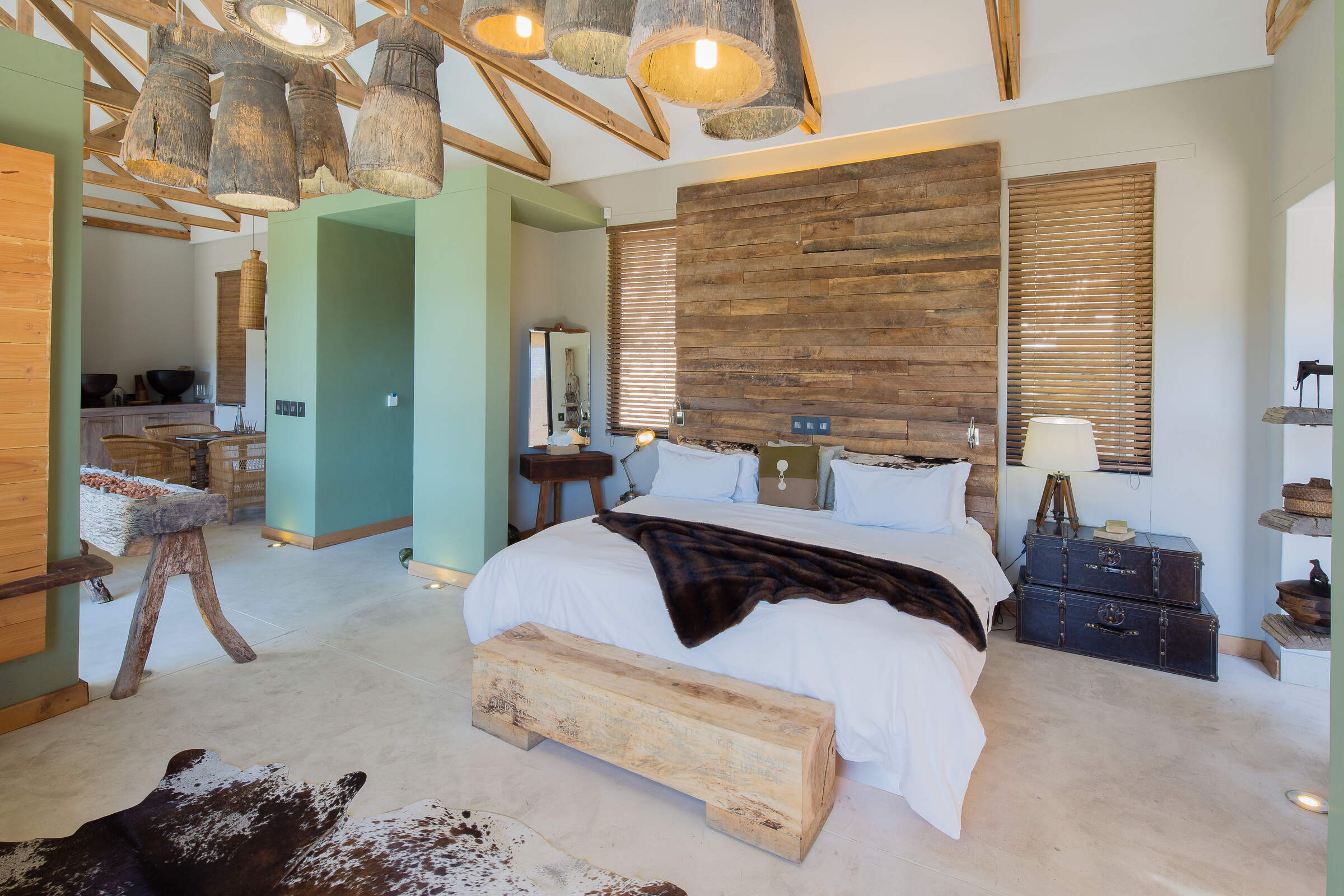
Olive Exclusive
The Olive Exclusive is perhaps Windhoek's most luxurious boutique hotel but remains a friendly and unpretentious place to stay.
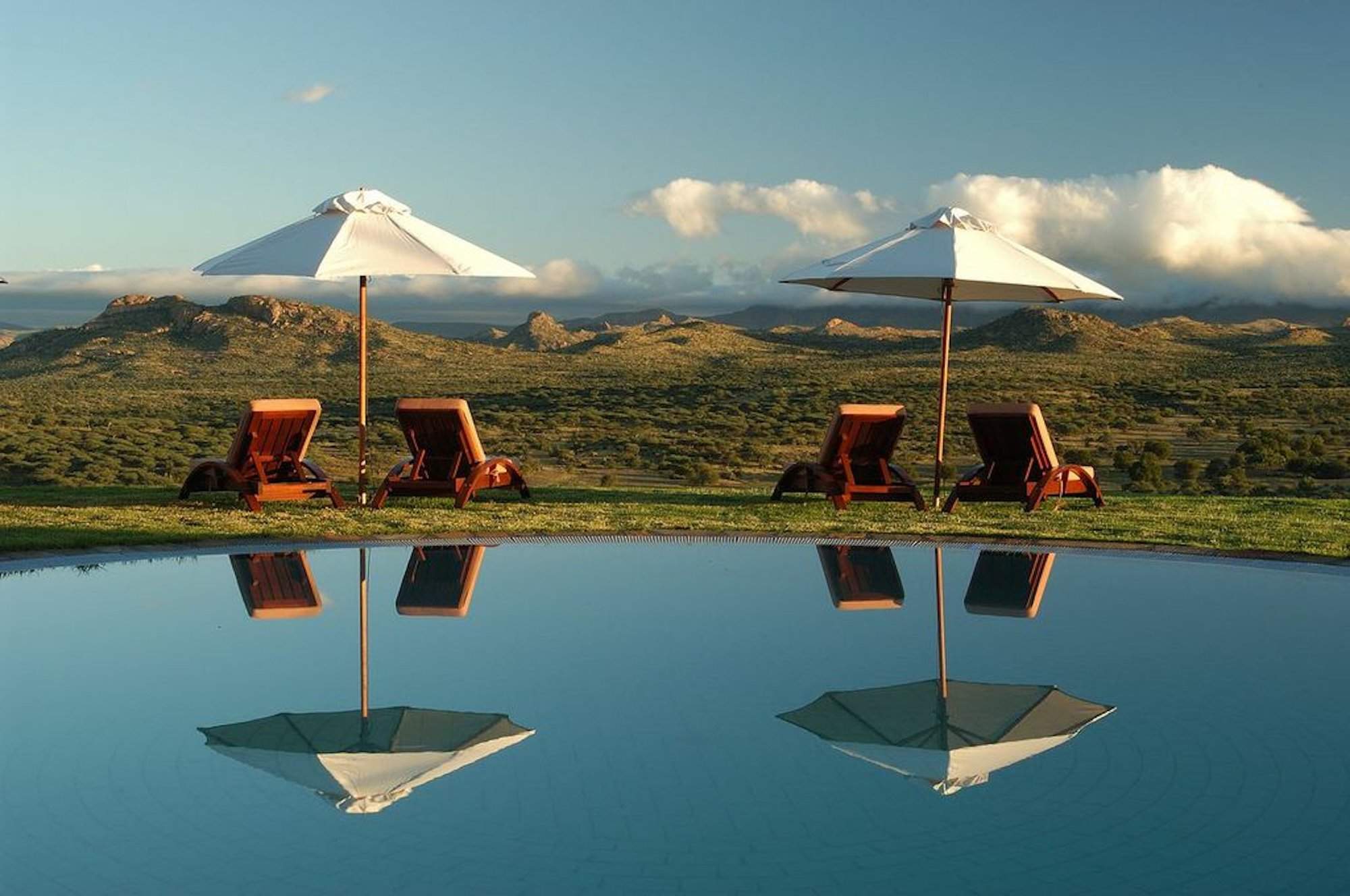
GocheGanas
For somewhere to really pamper yourself, Gocheganas Lodge & Spa offers wildlife combined with extensive wellness treatments.
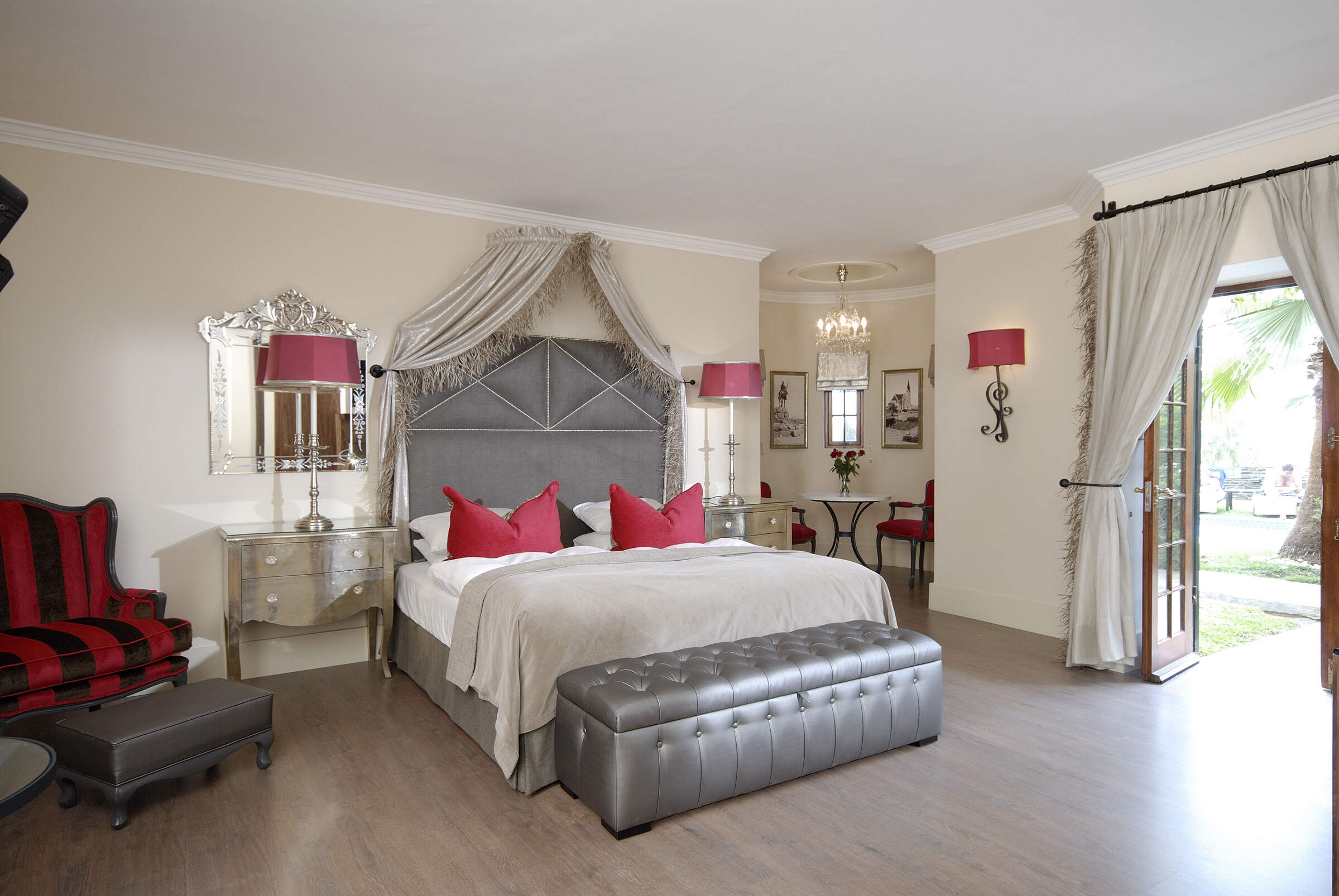
Heinitzburg Hotel
One of the oldest hotels in Windhoek, the Heinitzberg occupies a great hill-top location but can feel like a relic of a bygone era.
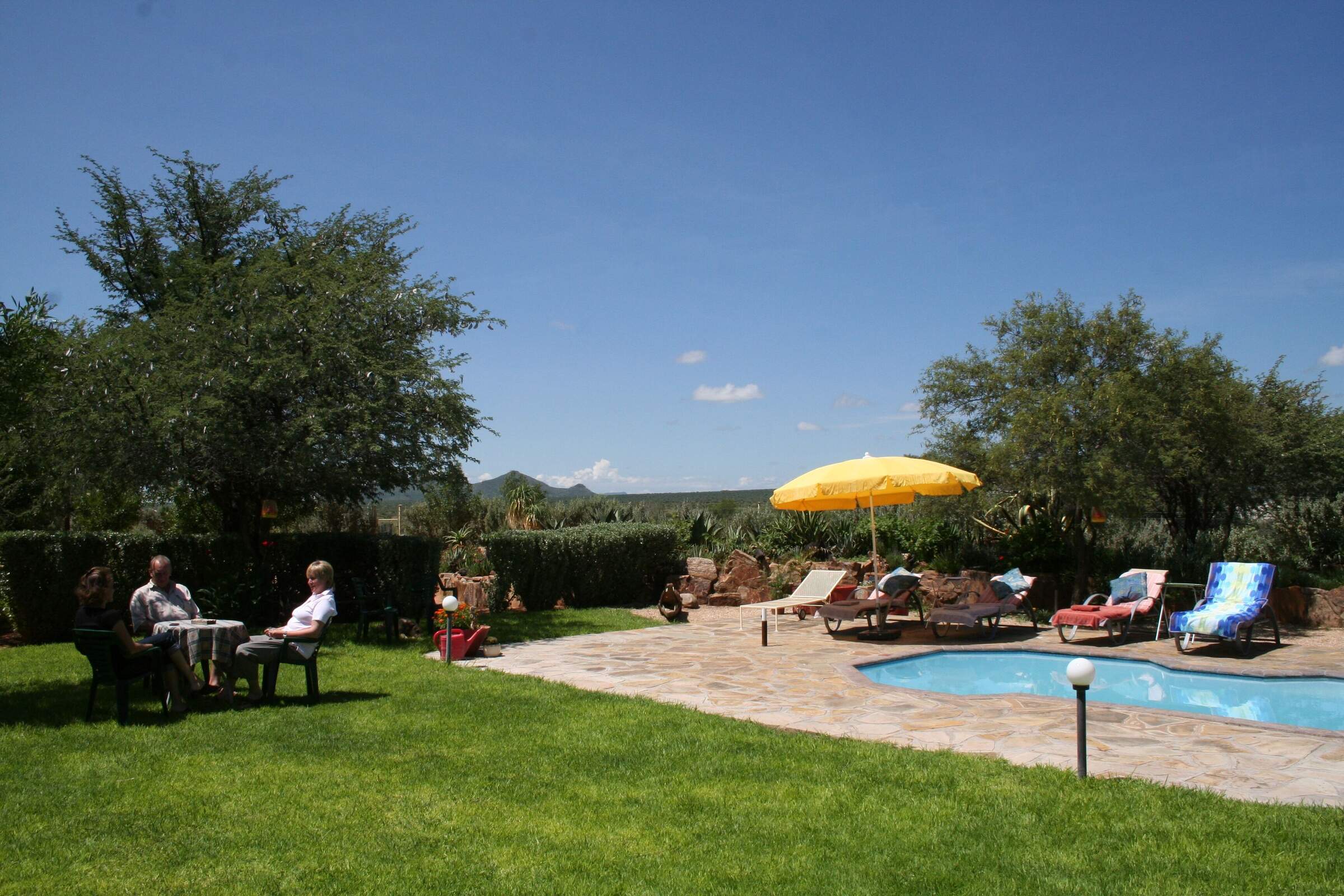
Etango Ranch G. Farm
Etango offers simple, clean, comfortable accommodation and it’s the closest accommodation to Windhoek International Airport.
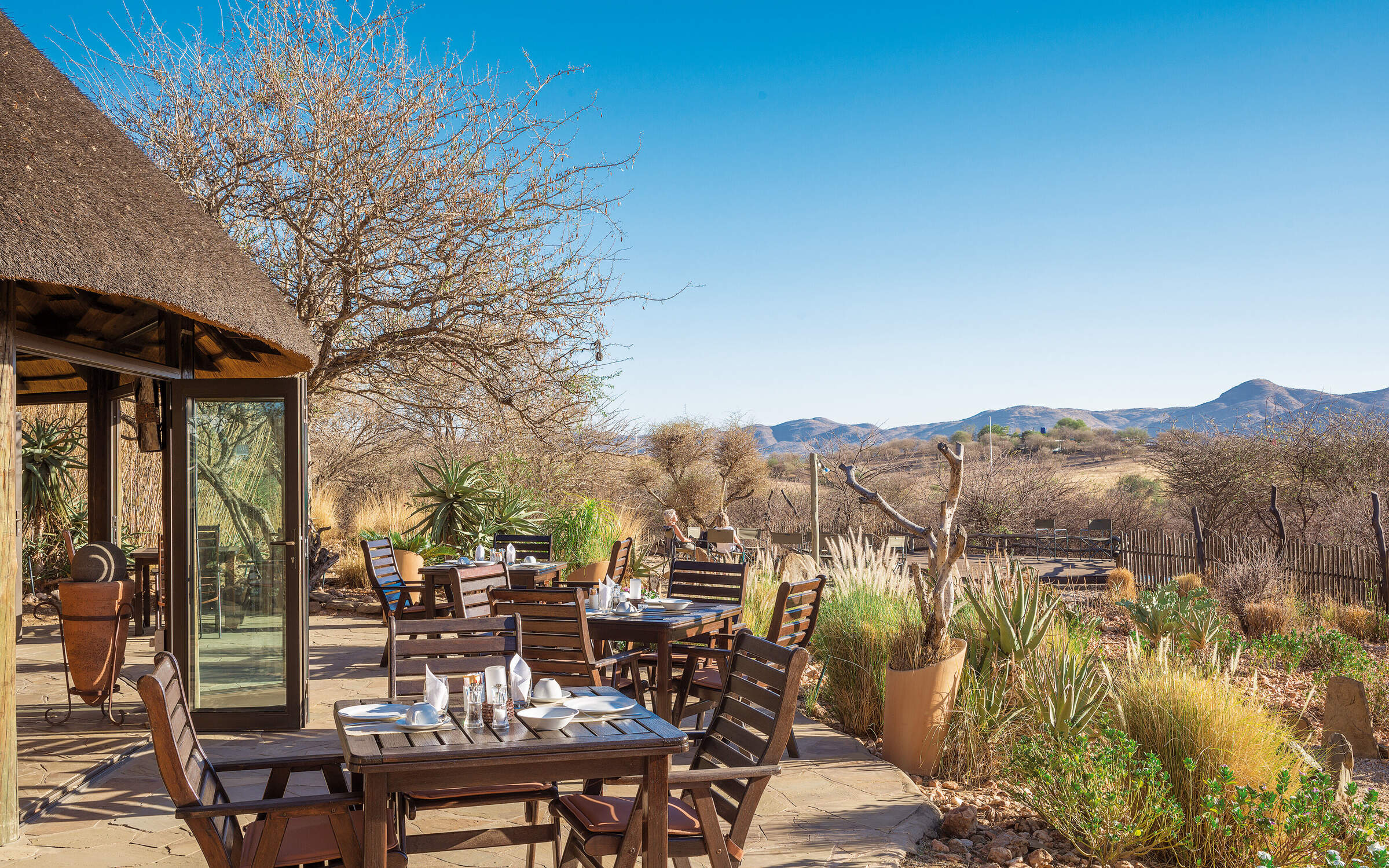
Immanuel Wilderness
Within easy reach of Windhoek, Immanuel Wilderness Lodge is a good overnight option for those who don't wish to stay in the city.
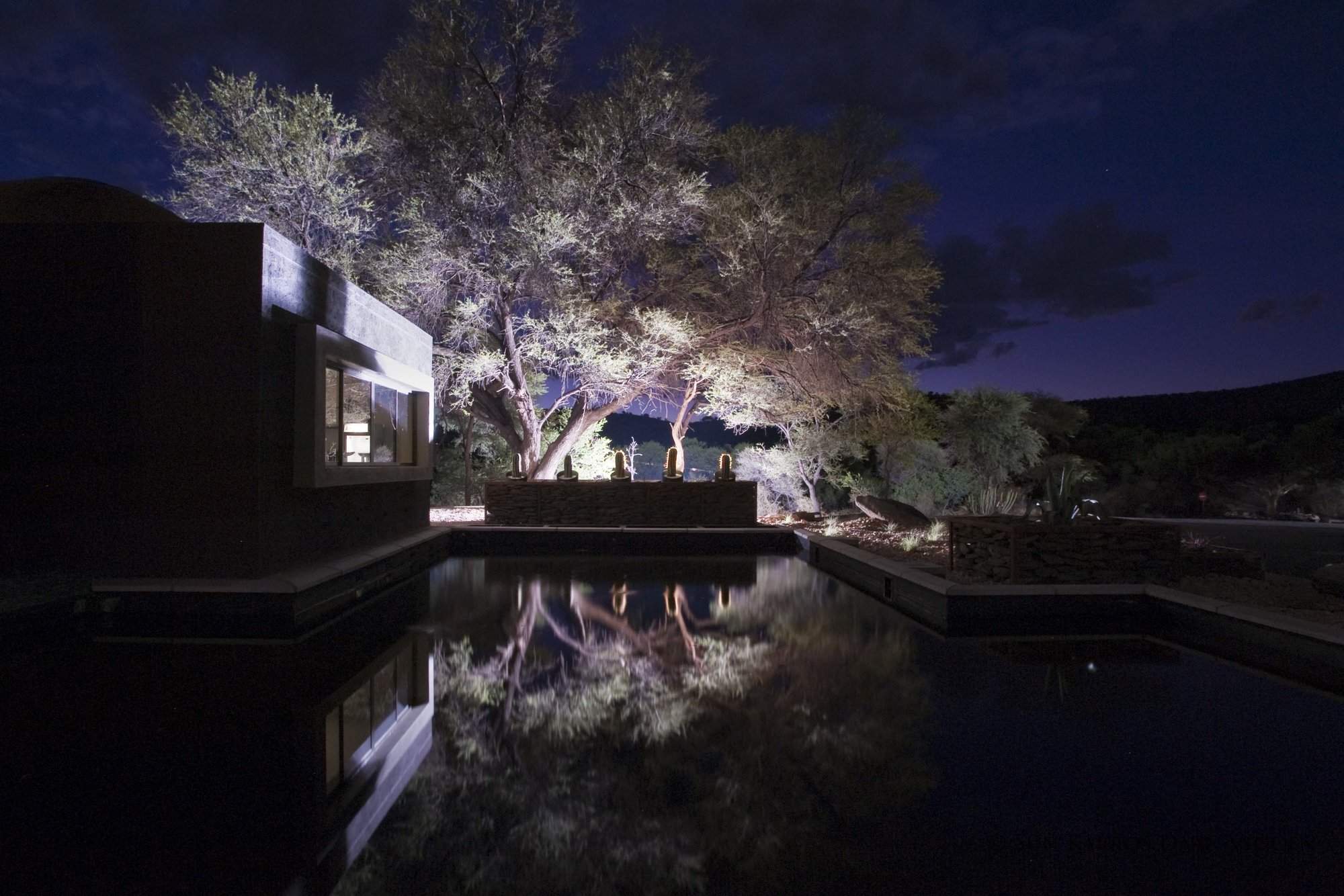
Sun Karros Daan Viljoen
Situated within the Daan Viljoen Nature reserve Sun Karros is a simple lodge with gentle game viewing and bird watching opportunities.
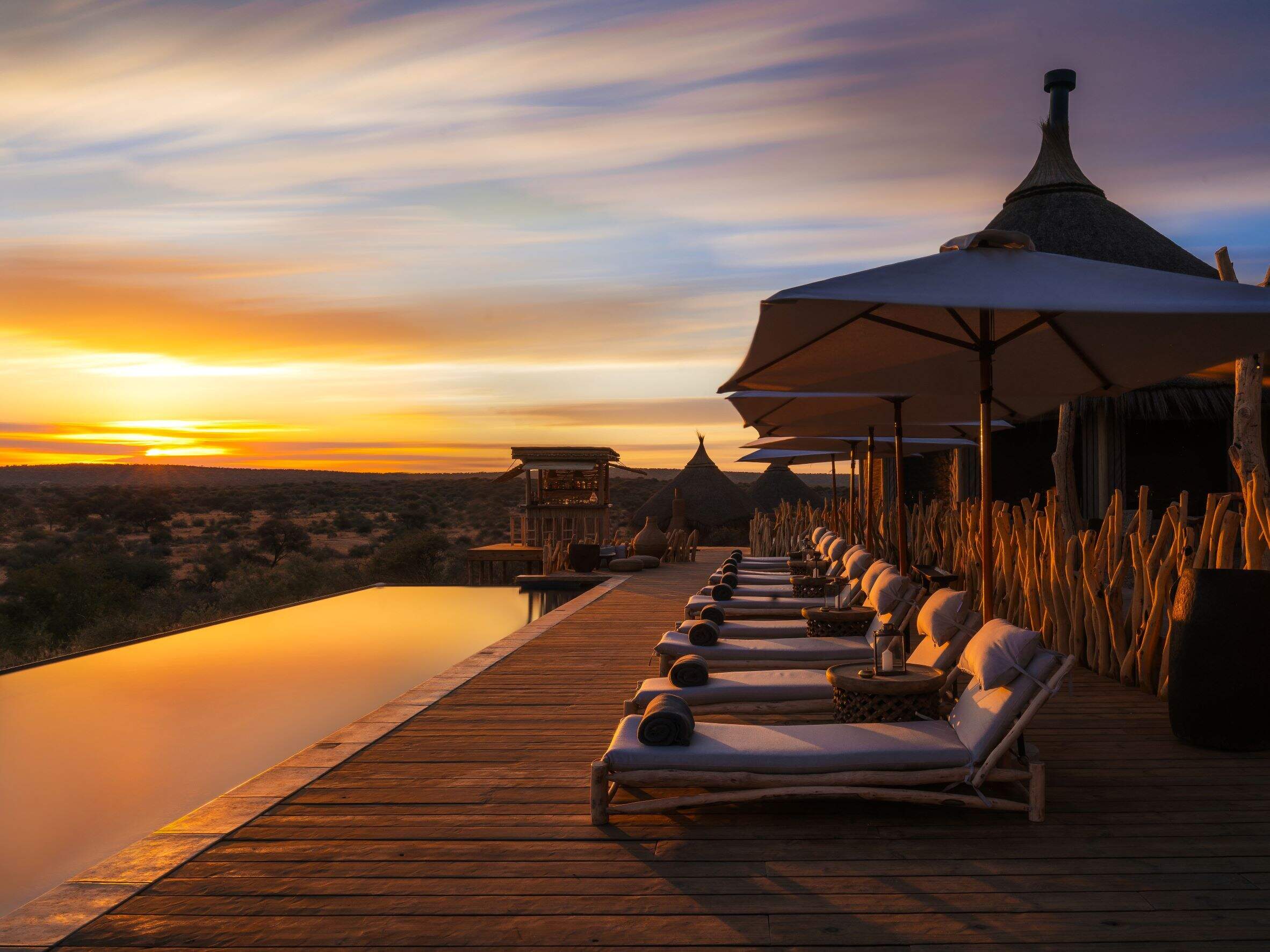
Omaanda
Omaanda offers luxury accommodation and wildlife viewing within easy reach of the international airport and Windhoek City.
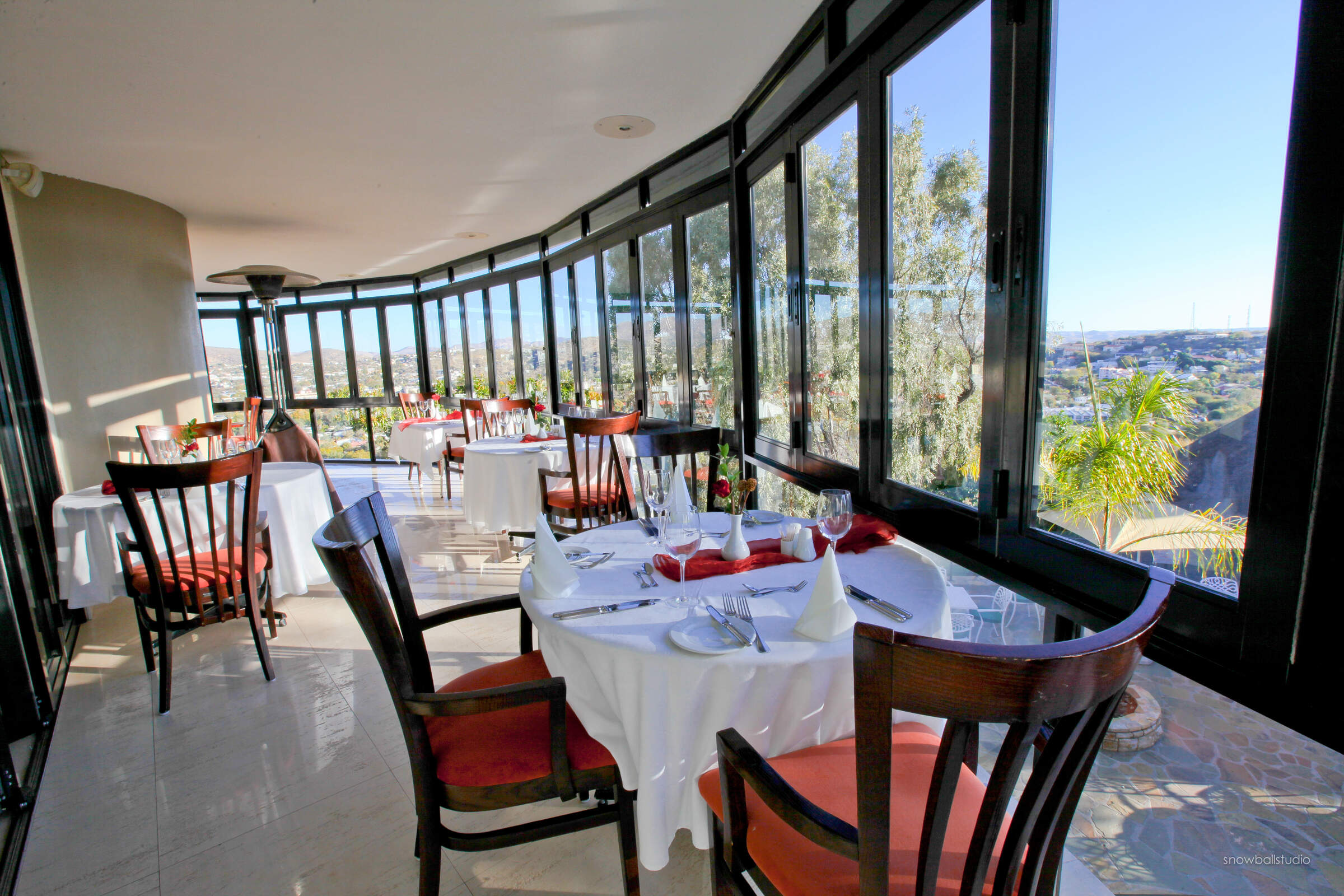
Hotel Thule
Windhoek’s Hotel Pension Thule offers stunning views across the city and a reputable in-house restaurant, within easy reach of the international airport.
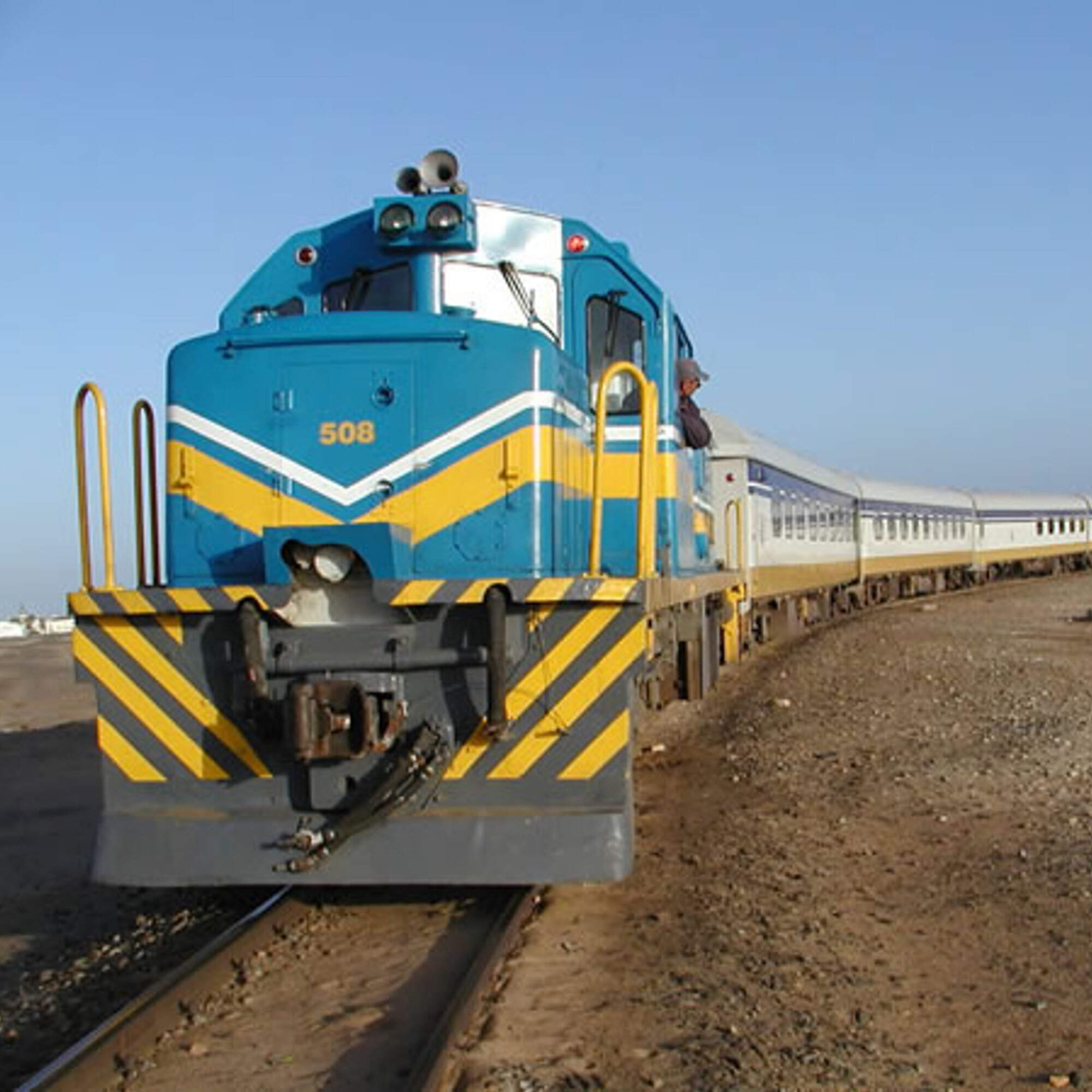
Desert Express
The Desert Express runs from Windhoek to Swakopmund on set departures. Recently this schedule has been somewhat erratic.
When to go to Windhoek
Our month by month guide: What it's like to visit Ti Melen in Windhoek
Jan
Feb
Mar
Apr
May
Jun
Jul
Aug
Sep
Oct
Nov
Dec
Namibia in January
January is at the heart of Namibia’s rainy season. However, as you’d expect from a country dominated by desert and semi-desert environments, the rains are often (but not always) weak and usually quite localised. Some days will be clear, the strong sun raising temperatures to around 30ºC/86ºF; on others humidity and clouds build, sometimes culminating in spectacular thunderstorms. In extreme cases, these generate flash-floods which race down the beds of ephemeral rivers.
Across the country, the greening landscape makes a refreshing change, especially in desert areas. Many birds are in full breeding plumage and migrant species are here in force. In the north, where the rains are more reliable, the abundant water and food allows wildlife to disperse, making it trickier to spot.
- Variable weather: clear, hot & dry, or cloudy & humid with some rain
- Occasional, highly localised thunderstorms
- Many animals with young; birdlife at its most spectacular
- Wildlife dispersed & harder to see, especially in Etosha & the Caprivi
- Very few tourists (apart from the New Year) so rates mostly low
Our view
This is not a great time to visit
Weather in January
Namibia in February
February is the wettest month, but as Namibia is dominated by deserts, the rains are often weak and patchy. The variation in weather across Namibia is significant, too; the central highlands and Caprivi can see some heavy rain. More typically, some February days are clear with a hot, strong sun; others are cooler as cloudy skies build and, sometimes, culminate in short, spectacular thunderstorms. Occasionally these generate flash-floods, bringing ephemeral rivers to life and making travel more challenging.
Across the country, the landscape feels green and alive; insects and smaller animals are more easily seen, and many birds and animals are raising their young. However, small pools in the bush and thicker vegetation can make it hard to spot the wildlife.
- Variable weather: clear, hot & dry or cloudy & humid with some rain
- Occasional localised thunderstorms meander over the landscape
- The bush feels alive; birdlife is at its most spectacular
- Wildlife in Etosha & Caprivi is dispersed & harder to see
- Few tourists, so rates usually at their lowest
Our view
This is not a great time to visit
Weather in February
Namibia in March
March usually sees Namibia’s main rains tailing off, although actual precipitation varies hugely across the country and can be unpredictable from day to day. Many days will be clear, with a strong sun driving temperatures up. On others, clouds will build, and the late afternoon may see a short, spectacular thunderstorm. Such deluges reduce in both frequency and volume as the month progresses.
Across the country, landscapes are often vivid: a “green and pleasant land”. Many birds and animals are finishing raising their young, so smaller animals and insects are in evidence. In the north, where rains are generally heavier, pools in the bush and thicker vegetation can make it difficult to spot larger animals.
- Variable weather: clear, hot & dry or cloudy & humid with some rain
- Afternoon thunderstorms less common as March progresses
- Animals looking sleek and well-fed, after 3–4 months of plenty
- Wildlife in Etosha & Caprivi is dispersed & harder to see
- Few tourists visit during March, so rates often low
Our view
A good time to visit, with pros & cons
Weather in March
Namibia in April
Typically, April is dominated by dry weather; there’s an ever-decreasing chance of rain. Temperatures are now below their peak and continue to fall. Even so, days remain pleasant and warm, but there might be a slight chill in the air at night. The rains usually leave many parts of the country verdant and green, so animals are in fantastic condition – often with fast-growing young in attendance.
With the dust washed out of the atmosphere, photographers make the most of clear air, spectacular landscapes and healthy animals. Stargazers will have clearer night skies as the month progresses. In the game parks of Northern Namibia, water and food remain in plentiful supply, so finding big game can prove trickier than later in the year.
- Becoming drier &, especially at night, also cooler
- Few visitors, except around Easter, so rates remain low
- Wildlife in Etosha & Caprivi remains relatively hard to see
- Migrant birds have started to leave
- Fresh, clean air and often green, verdant landscapes
Our view
A good time to visit, with pros & cons
Weather in April
Namibia in May
By May, Namibia is usually drying out fast as the rains have ended. If they’ve been good, then the land remains green, but wildlife starts to congregate at more permanent water sources. Over much of the country the air quality and clarity can be amazing, making this an ideal month for photography.
Typical days are warm, with crisp, clear mornings and clear blue skies. Evenings are usually cool, and temperatures may dip below 10ºC (50ºF) overnight. Many lodges still charge “low season” prices, although with Namibia’s increasing popularity in recent years, some have started to introduce higher “shoulder season” rates.
May’s good-value rates, increasingly good wildlife sightings, beautiful landscapes and crystal-clear air combine to make this one of our favourite months in Namibia.
- Lovely weather: dry, warm days & cool nights
- The country is drying out although many landscapes remain green
- Fantastic air clarity – ideal for keen photographers
- Visitor numbers are often still low, mirrored by lodge rates
- Wildlife is starting to congregate more around remaining water
Our view
A very good time to visit
Weather in May
Namibia in June
Namibia is dry again. Skies are blue and usually largely cloudless. Days are lovely: warm and dry; nights are cold, sometimes below freezing in the desert. Most swimming pools in Namibia are always outdoors, making them too cold for all except the very dedicated.
Take a warm hat and gloves for game drives, where dawn and dusk will feel particularly chilly. In the north, especially Etosha, wildlife viewing is now into its dry-season pattern, focusing around the waterholes – though the park is still not busy.
Photographers come for superb air clarity, with minimal dust or smoke in the air. Historically, June rates have been low. However, with Namibia’s increasing popularity many lodges now count it amongst their “high-season” months, and request higher prices.
- Clear, bright days with blue skies; cold nights, mornings & evenings
- Great air quality, especially welcome for photographers
- “Shoulder season” for some lodges: lodge rates moderate
- Wildlife gravitates to waterholes, making game-viewing productive
- Some greenery in the landscape, depending on the last rains
Our view
A very good time to visit
Weather in June
Namibia in July
Reliably warm daytime temperatures (upwards of 20ºC/70ºF) and good wildlife sightings make this a popular month to visit Namibia. Rain would be very unusual indeed and clear skies make for great photographs. Once the sun sets, though, temperatures cool rapidly bringing cold nights that may dip below freezing in the desert. Be prepared: dress in layers and expect early-morning and late-afternoon drives, and anywhere coastal, to be cold.
As the land dries and vegetation shrivels, game congregates beside drinking water: Etosha’s waterholes are busy with animals. Across the country, lodges charge “high season” rates; many are fully booked a year or more in advance, especially during European school holidays (from the latter half of July to late August).
- Dry days, warm in the sun, with crisp, cold nights
- Cloudless skies: July is usually superb for stargazing
- The beginning of European school holidays so more families travelling
- Peak season: so high rates and many lodges fully booked far in advance
- A fantastic time of year for wildlife watching, particularly in Etosha
Our view
A very good time to visit
Weather in July
Namibia in August
August is the height of Namibia’s “winter”. Expect cloudless skies and plenty of warm sun in the day, but nights down to freezing in the desert. Dress in layers and bring warm clothes (including hats and gloves) for chilly starts and evenings. Only the hardiest even contemplate using outdoor pools.
It’s 3–4 months since any rain, so the land is dust-dry and much vegetation is golden brown. Many landscapes appear sparse and harsh. Wildlife congregates around available water sources, helping to guarantee good animal sightings.
Namibia is never really “busy” by the standards of Europe or the USA, but August is the most popular time to visit, especially for families. Book early (over a year in advance) if you want to stay at the best lodges.
- Dry days, warm in the sun; cold mornings, evenings & nights
- Cloudless skies in the day; spectacular stars at night
- Busy by Namibian standards: family rooms in particular demand
- Peak season: so high rates and many lodges fully booked far in advance
- A fantastic time of year for wildlife watching, particularly in Etosha
Our view
Fantastic: the very best time to visit
Weather in August
Namibia in September
September is a month of blue, cloudless skies and fantastic wildlife viewing. Rain is almost unheard of. As the month progresses, the days and nights get warmer. In some areas, daily maximums hit around the low 30s Celsius, although low humidity ensures this feels comfortable. The contrast makes the nights seem very cold. The air is becoming dustier, occasionally augmented by smoke from fires – so becoming hazy for photographic purists.
In the national parks, animals congregate around remaining water sources – making September one of the best months for game viewing. Hence it’s one of Namibia’s most popular months for visitors: a “high season” month that is often the time of choice for safari aficionados.
- One of the best months for wildlife viewing
- Warm days & cold nights, with temperatures rising during the month
- Many plants have faded from green to golden brown
- Air can be hazy – with dust & sometimes smoke
- High season rates; many lodges & camps are full 9 months in advance.
Our view
Fantastic: the very best time to visit
Weather in September
Namibia in October
Namibia is usually at its hottest and driest in October. Temperatures build as the month progresses; towards the end, daily highs may exceed 40ºC/100ºF, though with humidity close to zero, even this rarely feels oppressive.
In exceptional years, isolated rain showers may fall in late October. More usually, the end of the dry season sees wildlife watching at its best, particularly in Etosha. The place feels like a desert as spectacular herds of thirsty animals gather around the available water. October is popular amongst wildlife enthusiasts and commands peak-season prices, even if dust and smoke may make the air hazy, challenging photographers. Visitor numbers can fade towards the end of the month, allowing a window for last-minute bookings.
- Probably the most spectacular month for wildlife-viewing in Etosha
- Hot and dry: much of the country feels like a desert
- The air can be hazy with dust & smoke
- It’s peak time to visit, so expect high season rates
- Lodges & camps are full, especially early in October
Our view
A very good time to visit
Weather in October
Namibia in November
November is always a bit unpredictable: sometimes dry and hot; sometimes cloudier and cooler. Typically, mornings are hot and cloudless and clouds appear in the afternoon. Humidity builds and eventually breaks, resulting in spectacular thunderstorms that bring convection rainfall in late afternoons. Such storms are typically sparsely distributed and highly local – being completely absent from desert areas, for example. Places that do get good rain will flush green, with a tangible feeling of new life softening the landscapes. Many mammals give birth to their young.
Once any rains come, wildlife dissipates in search of food, and game viewing in Etosha becomes harder. Conversely, this is a great time for birdwatchers, with migrant species in breeding plumage.
- A very interesting, variable month, depending on the rains
- With rains come an amazing explosion of both vegetation & new life
- Wildlife viewing better in Damaraland than Etosha if it has rained
- Shoulder season: mid-range rates offer great value
- Away from the Namib, showers are more likely later in the month
Our view
A good time to visit, with pros & cons
Weather in November
Namibia in December
December is the first “proper” month of Namibia’s rainy season, and one of its hottest. Clear mornings give way to building clouds and, with luck, the occasional short, spectacular thunderstorm: refreshing and cleansing. These are often highly localised and generally warmly welcomed: most Namibians love rain!
Rains clear the air of dust. Even relatively short showers enable plant life to erupt, carpeting this thirstland in green and providing food for the young animals which abound. Animals disperse widely, which can make game viewing challenging. Many birds are breeding and so sporting their most colourful plumage.
Christmas and the New Year fall within local “summer holidays” – so places to stay can be surprisingly busy, especially in and around coastal towns, where temperatures are cooler.
- Hot and humid; sometimes refreshed by cooling showers
- Landscapes flushed green if/where there has been rain
- A tangible life and energy amidst this often green & pleasant land
- Very photogenic: blooming deserts amidst crystal-clear air
- Best time for birdwatchers; larger animals harder to spot
Our view
This is not a great time to visit
Weather in December

Looking for inspiration on where to travel next?
Visit our trip chooser to explore your options and find inspiration for your perfect African adventure
Inspire me